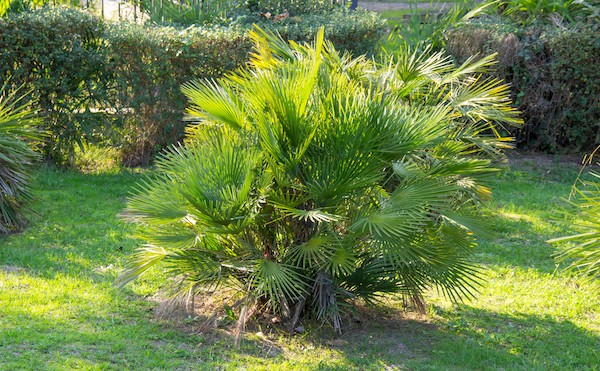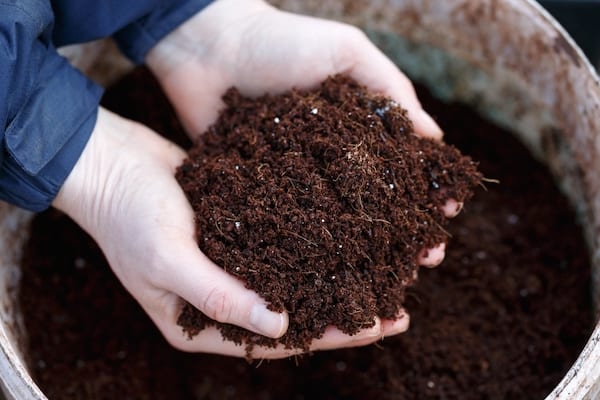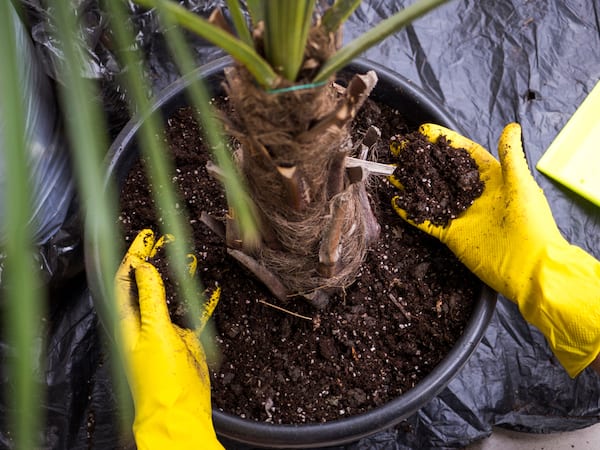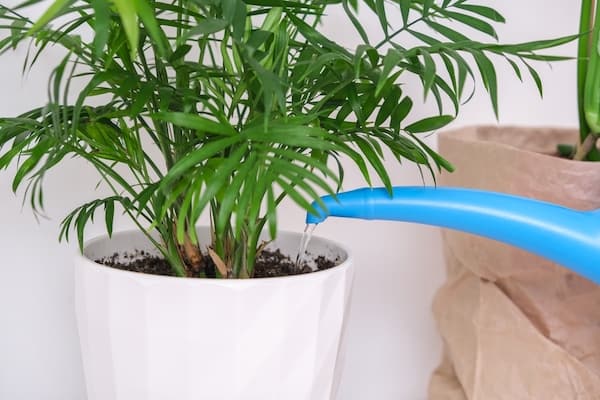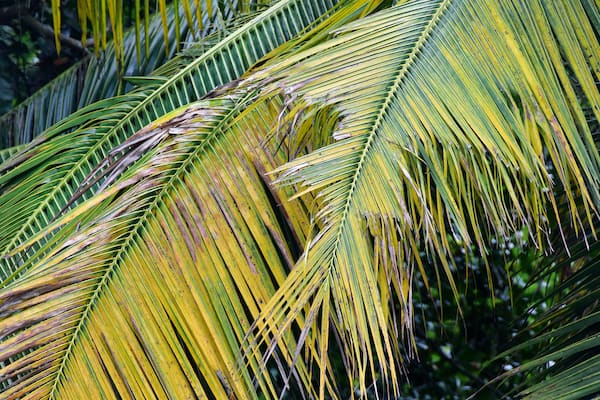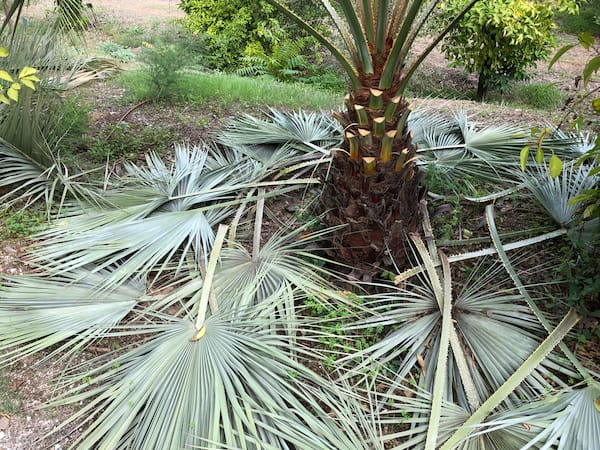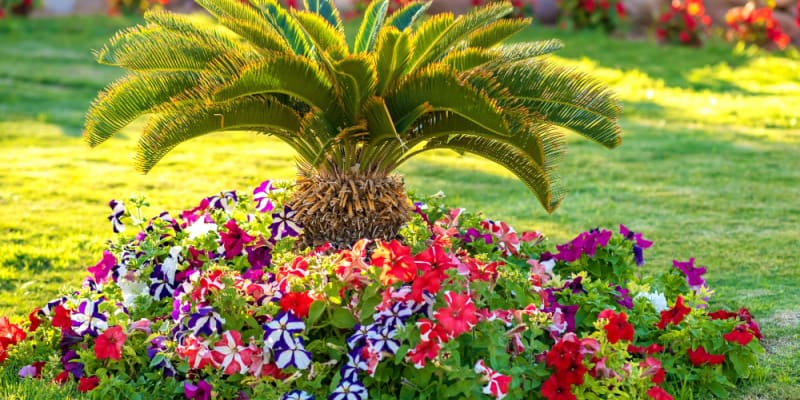
Creating Your Own Palm Paradise: Growing and Caring for Your Trees
Our site is reader supported, this means we may earn a small commission from Amazon and other affiliates when you buy through links on our site.
You may wonder why I’m writing an article about how to grow and care for palm trees for UK gardens. But there are some species of palm trees – called hardy palms – that can withstand temperatures down to 10˚C. Alright, you have to give them special care and attention in the winter months and even further down, this is not always needed either. But isn’t it worth it to have tropical plants as part of your garden landscape?
If you thinking of growing palm tree in a large container, I have a complete guide on growing palm trees in pots here.
Types of palm trees for the garden
As I said above, look for palm trees marked as “hardy”. These include the Pindo palm tree, the European fan palm, and the Emerald Island Giant Dwarf Palmetto that handles temperatures close to zero. I also have a guide here on winter hardy palm trees and winter care. Remember that each type of palm tree has its own look and layout of palms, so there’s plenty of choice of visual appearance.
Here are five hardy palm trees that can be grown in the UK:
- Chamaerops humilis (European Fan Palm)
- Trachycarpus fortunei (Chinese Windmill Palm)
- Butia capitata (Jelly Palm)
- Sabal minor (Dwarf Palmetto)
- Cordyline australis (Cabbage Tree) – not a true palm, but can provide a similar tropical look.
Grow your palm tree
Best place to plant your palm tree
You need to choose a sheltered location to grow your palm trees. They don’t do well in wind-swept places, even in somewhere that only occasionally acts as a wind tunnel. Palms grow slowly and need space to expand, so don’t box yours into a corner in which there’s no room to develop. There might be some empty space around the tree for quite a while. Palms don’t compete well with surrounding plants so don’t put them in the middle of a flower bed.
Make sure the location stays dry in winter.
The best soil for palm trees
Prepare the soil for your palm tree by using an organic compost in your existing soil. Palms need loose and well-drained soil, so you may need to add some perlite or horticultural gravel if your soil is a bit clumpy. You need to avoid the soil becoming water-logged as that leads to fungal diseases and rot moving in.
Sunlight and temperature
Place your palm tree in the warmest spot in your garden, as long as it’s sheltered. Most palms prefer bright sunlight but beware too much direct light as that can cause leaf scorch. Try for six hours of direct sunlight per day, but some shade in the midday hours.
But remember that there are many varieties of palm trees, each with its own requirements. Check what your particular palm tree needs. And that applies to the temperature range that best suits them too. The hardy palm varieties that you can plant outdoors can survive easily down to fairly low temperatures (again, an individual number but often around 10˚C), but below this, you need to overwinter them. See that section below in this article.
How to plant your palm tree
Dig the hole
Dig a hole at least twice as wide as the diameter of the root ball of the palm tree. but keep the hole shallow, no deeper than the root ball. Palms have shallow roots.
Handling the palm tree
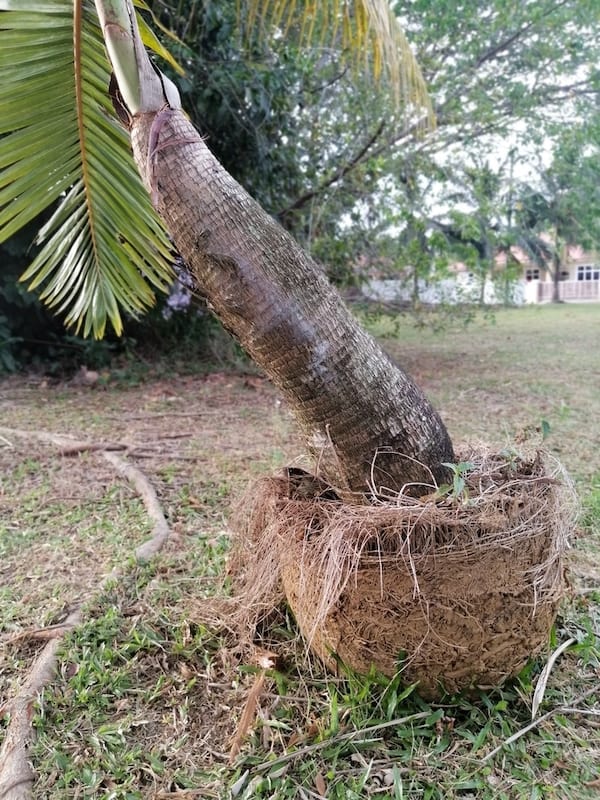
You need to be careful when handling the tree and the root ball. They’re both delicate. The heart of the palm tree is especially susceptible to harm and cracking that affects the growth potential of the tree.
Remove the palm tree from the container
It’s easier and safer to cut the plastic container away from the root ball. This prevents root damage. Lay the palm tree on the ground.
Plant the palm tree
Level the hole – add or remove soil – so that the bottom of the tree trunk comes up to ground level. Make sure to use loose soil or organic compost to fill the hole if needed.
Put the palm tree in the hole and back fill with loose soil or compost. Tamp it down lightly.
Brace/support your palm tree
Sometimes a palm tree needs a support to grow between/against. This is particularly so if the root ball is small and the tree becomes top heavy. you can make a simple brace by spacing four 2×4 pieces of lumber around the tree and fastening them to the tree using hessian. You can do this at several points up and down the tree trunk.
Care for your palm tree
Watering palm trees
You should water newly planted palms frequently to give them a chance to form their roots. To ensure that the water reaches the root ball, make a small dam on the surface of the soil around the root ball and water directly into this. If your new palm has been cut from one in the ground, take extra care as the cut roots need more help to reach the water.
However, over-watering can harm the roots. Water-saturated roots can’t access oxygen in order to send water and nutrients around the plant. In addition, root rot might move in. (See Pests and diseases section for more details.)
Water your palm plant regularly until it’s established, a few months should do this. Then you can cut back the watering as palms are drought tolerant trees.
Watch out for the lower leaves turning yellow or brown as this is a sign that the plant is thirsty.
As always, when you water your palm, check to see that the excess water isn’t collecting in the soil and making it too wet.
Problems to watch out for with palm trees
Watch out for yellowing leaves, this is the most common problem with palm trees and its usually either to much or too little water or a nutrient problem. You can read more about yellowing leaves on palm tree here.
Feeding palm trees
Your first feed of fertiliser for your newly planted palm tree should be about a month after planting. Then fertilise every few weeks until late autumn. Don’t fertilise when the palm is in its dormant state in the winter. Make sure to use palm food, a fertiliser specially formulated for palms that contain extra potassium and manganese. Anything else may cause growth problems for the plant. Once palm trees are established, they usually only need feeding once a year in spring, but even this is usually not essential unless there is a lack of nutrients in the soil.
Pruning
Palm trees are one of a few trees that you do not prune. Instead, remove any dead, diseased or discoloured leaves carefully using a sharp and sterilised cutting tool. Cut the leaf stalk; do not cut into the tree trunk.
And absolutely do not cut anything at the top of the tree, as this is where all the new growth happens. I have a detailed guide on pruning palm trees here.
